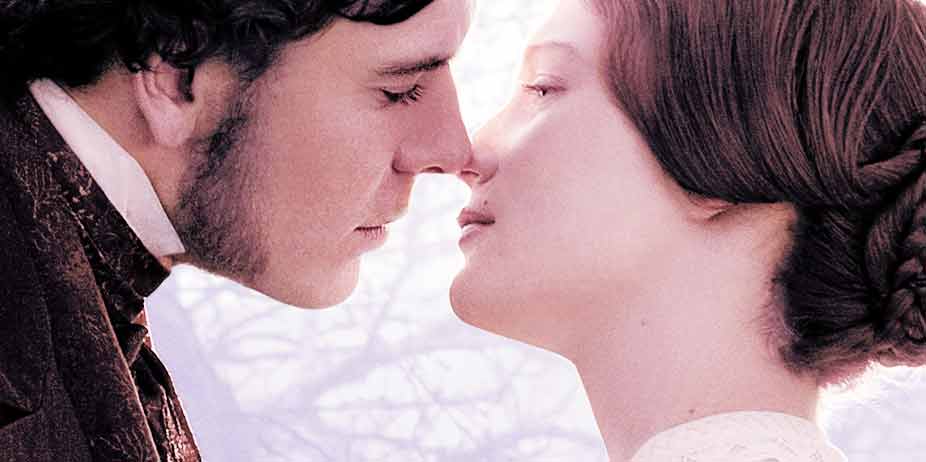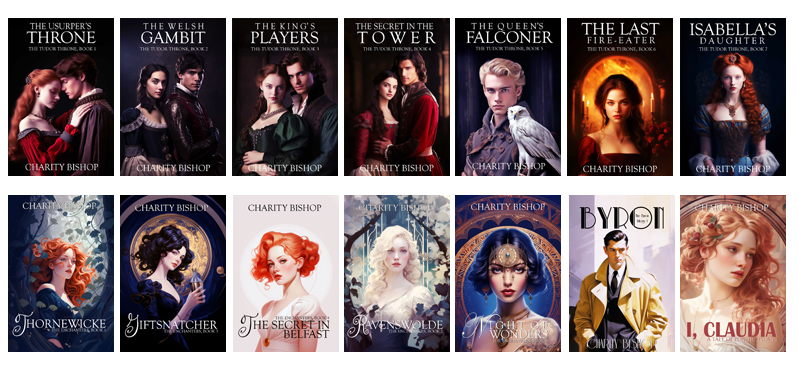
Jane Eyre (2011)
Reviewer: Shannon H.
Charlotte Bronte’s novel, Jane Eyre is basically the quintessential Gothic
work, complete with mystery, romance, and some horror mixed in for good
measure. It is shocking and unpleasant at times but it is a worthwhile read. There are several film and television versions of this novel and this film is
one of them.
Jane Eyre (Mia Wasikowska) is fleeing Thornfield Hall with her belongings,
crying along the way. During a rainstorm, she collapses at the doorsteps of a
parsonage and is nursed back to health by St. John Rivers (Jamie Bell), a
minister and his two sisters Diana (Holliday Grainger) and Mary (Tamzin
Merchant). Upon her arrival, St. John asks her where she came from and where
was her family. Jane divulges, telling the young minister about her abusive
childhood. When Jane was young, her parents died and left her to the care
of Mrs. Reed (Sally Hawkins), her aunt. Life was a living hell for Jane as she
was treated like garbage while her cousin John (Craig Roberts) was considered a
saint by his mother. After beating her older cousin after he had hit her head
with a book, Jane was locked up in a room as punishment.
Eventually, Jane was sent to Lowood, a religious school run by the hypocritical
clergyman Mr. Brocklehurst (Simon McBurney), where her miserable life extends
itself with abusive teachers. There, she makes her first friend, Helen Burns,
who dies of typhoid soon after. Years later, Jane goes to work at Thornfield
Hall for the next three months, owned by the mysterious and handsome Edward
Rochester (Michael Fassbender) and managed by the housekeeper Mrs. Fairfax (Judi
Dench). She enjoys her new job as a governess to Mr. Rochester’s ward, the
French-speaking Adele. At first, he accuses her of bewitching him and making
him sprain his foot after scaring his horse while he was out riding, but
immediately warms up to her after she saves him from being burned to death in
his bedroom. Mr. Rochester tries to get Jane to open up a little bit in
conversation as her answers are mostly “yes sir” and “no sir.” He also asks her
for advice in certain situations.
Jane’s accommodations are nice but she soon finds out that there are things that
are definitely going bump in the night. Thumping noises and footsteps
can be heard above Jane’s bedroom in the attic. Things go from weird to downright horrific
when Mr. Rochester drags Jane into his bedroom one night to find a friend of his
with a gaping neck wound...
The film is rated PG13 and it does merit it due to some
intensity. There is no profanity and the violence is mild but
disturbing. A young boy slaps another girl in the head with a book, causing her
to bleed a little bit from the forehead. In retaliation, she jumps on him and
beats him with her fists. As punishment, a girl is locked in a room and she
hits her head against the door, knocking her unconscious. Girls are caned
behind the neck at a religious school as punishment. A man is seen with a
gaping, bloody wound in his neck. A crazed woman spits at another woman. Sexual content is nonexistent but there is some sensuality. A woman looks at a
painting of a nude woman twice (the second time is a brief close-up). A man is seen putting on a pair of pants under his pajamas after being
woken to alert him to a fire in his room (nothing is seen; his female employee
turns her head to avert her eyes). A man hugs a woman and presses his face
against her mid-section in a nuzzling position. While not sexual,
there are some scenes involving emotional and physical child abuse that might be
disturbing to some viewers.
Jane Eyre isn’t a Christian film by any means but it does contain a good amount
of spirituality. There are a couple of scenes where Jane is seen praying and
eating with different people. It is important to
note that most of the characters do believe in God and thank Him. Jane is able
to distinguish between the religious hypocrisy of Mr. Brocklehurst and the
goodness of the clergyman, St. John Rivers, who is happy to rescue Jane from the
cold and provide her with shelter and a job. She is also able to forgive her
dying aunt for the nasty things she has done to her. Jane may seem weak at
first but she is a good example of meekness. To quote 2 Timothy 2:24, “And the
Lord’s servant must not quarrel; instead he must be kind to everyone, be able to
teach, not resentful.” Despite her terrible childhood, Jane is able to live and
let live and let go of her past, which is amazing, considering that others with
similar experiences might spend a lifetime full of emotional and mental
anguish. Also, it is quite clear in the film that Jane is moral and stands by
her convictions.
This is a great film and embodies the Gothic themes from the novel. Michael Fassbender makes an excellent Edward Rochester and Mia Wasikowska is excellent as the frightful but strong governess. The two actors had amazing chemistry and made this movie work. The cinematography is fantastic and I loved the dark Gothic-Victorian backdrop. It’s true to the nature of the book but, as most film renditions of literature are, there’s always deviation from the plot and it does have a few mistakes and errors. The film doesn’t chronologically follow the book and most of it is presented as flashbacks to Jane’s life, but I thought that was an interesting spin on the story. The ending was a little disappointing for me but I won’t divulge the details as to why. My other concern was that Jane and Mr. Rochester didn’t waste a whole lot of time plunging into a romantic relationship. It would’ve been better if their professional/business relationship were to take time to develop into romance. A couple of passionate kissing scenes did make me feel a little uncomfortable and those could’ve been toned down a bit. A few of the camera angles were shaky, especially when Jane flees Thornfield; it has a slight “sea sickness” effect to it but it shouldn’t be a problem as most of the film stays put. While it has its flaws, this is a fantastic film for aficionados of Victorian literature and period pieces. I would definitely recommend it.
